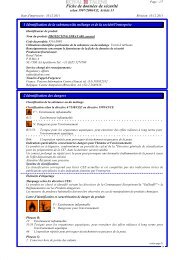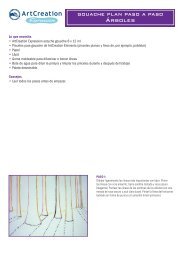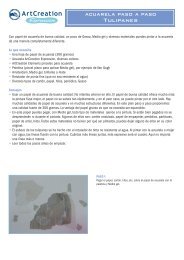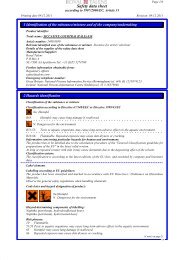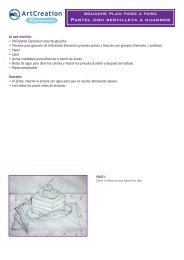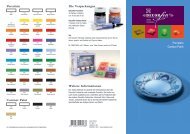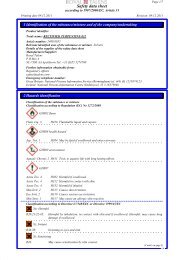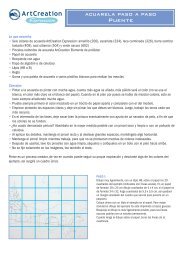Colour booklet
Colour booklet
Colour booklet
You also want an ePaper? Increase the reach of your titles
YUMPU automatically turns print PDFs into web optimized ePapers that Google loves.
colourIntroductionThe world around us is a constantly changing spectacle of colour. In order to capture this ina painting, one needs a knowledge of the theory of colour. The first three sections of this<strong>booklet</strong> outline the principles of colour theory:The origin of colourProperties of coloursMixing coloursThe usual view is that all colours can be mixed from the three primary colours red, yellowand blue. In theory this is correct. However, in practice this three-colour system of mixingturns out to have its limitations. Fortunately we are not dependent on the three primarycolours alone. The system can be expanded in such a way that every conceivable colourcan be mixed with others without restriction.The mixing of colours is not the aim of painting. A painting is a flat surface. On it we canpaint a representation suggesting a three-dimensional space, or one in which every hint ofspace is avoided. Simply by using the colours correctly this suggestion can be convincinglymade. Therefore with the aid of examples we shall discuss the possibilities of achieving thedesired result. We do this in the last section:Painting with colourWe wish you much enjoyment on this voyage of discovery!Note: The colours illustrated should be seen only as a guide, because the four-colour printing process imposes restrictionson the accurate reproduction of colours. This applies particularly to the orange colour band.pagen 2



